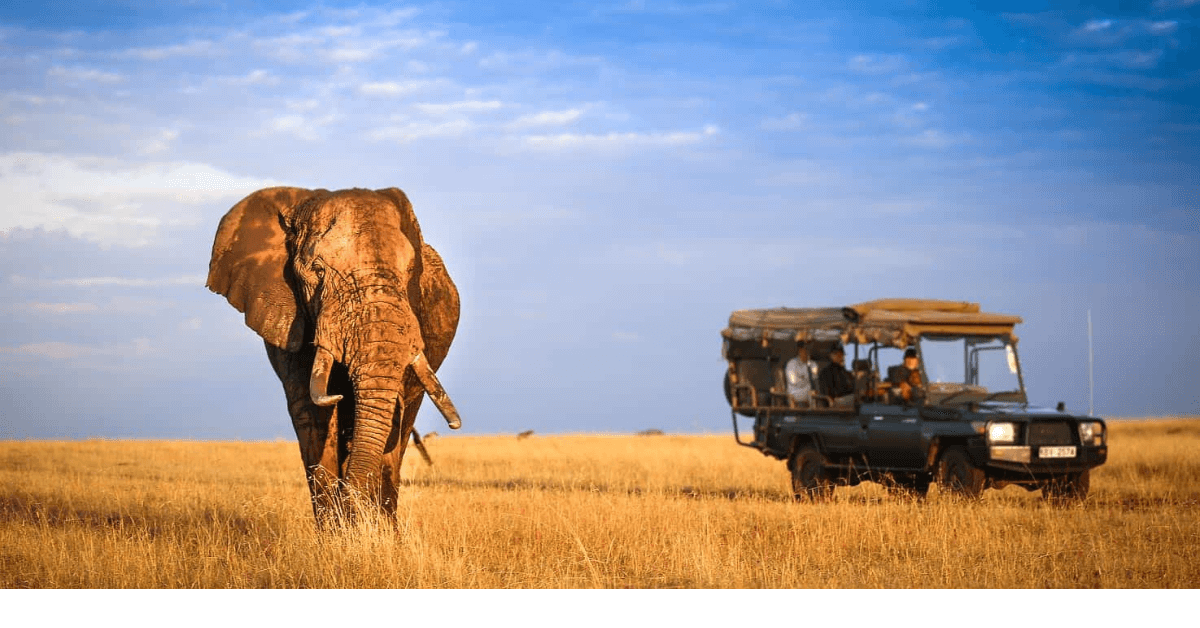Embarking on an African safari is a dream for many travelers, offering an unparalleled opportunity to witness breathtaking landscapes, encounter incredible wildlife, and experience diverse cultures. But before packing your bags, it’s essential to understand the costs involved. Safari trips vary widely in price depending on factors such as location, duration, accommodations, and activities. This guide will break down the average costs to help you budget for the adventure of a lifetime.
Factors Affecting Safari Costs
- Destination
Africa is a vast continent with multiple safari destinations, each offering unique experiences and varying price points. Popular safari countries include:
- Kenya and Tanzania: Known for the Great Migration and iconic parks like the Serengeti and Maasai Mara.
- South Africa: Famous for Kruger National Park and luxurious private reserves.
- Botswana: Renowned for the Okavango Delta and exclusive, high-end safaris.
- Namibia: Offering desert landscapes and unique wildlife experiences.
- Uganda and Rwanda: Known for gorilla trekking, which can significantly increase costs.
Generally, East Africa and Southern Africa are the most popular regions, but the cost of safaris can vary even within these areas.
- Type of Accommodation
Accommodation ranges from basic camping to ultra-luxury lodges. Here’s a breakdown:
- Budget: Basic campsites or modest lodges, costing around $100-$250 per night.
- Mid-Range: Comfortable lodges and tented camps, priced at $250-$500 per night.
- Luxury: High-end lodges with gourmet meals and personalized services, ranging from $500-$1,500 per night.
- Ultra-Luxury: Exclusive lodges in remote locations, often exceeding $2,000 per night.
- Length of Stay
The duration of your safari greatly influences the total cost. A typical safari lasts 3-10 days:
- A 3-day safari may cost $1,000-$3,000.
- A 7-day safari can range from $2,500 to $10,000.
- Longer trips, especially those including multiple countries, can exceed $15,000.
- Season
The time of year significantly impacts safari costs:
- High Season: Peak wildlife viewing periods, such as the Great Migration (June-October), see higher prices.
- Shoulder Season: Transitional months offer good wildlife viewing at slightly reduced rates.
- Low Season: Often coinciding with the rainy season, prices drop, but wildlife visibility may be limited.
- Mode of Transportation
How you travel within the safari also affects costs:
- Driving Safaris: More affordable, especially for group tours.
- Fly-In Safaris: Involve charter flights to remote areas, significantly increasing expenses.
- Special Activities
Certain activities come with additional costs:
- Gorilla trekking permits in Uganda and Rwanda: $700-$1,500 per person.
- Hot air balloon safaris: Around $400-$600 per person.
- Night drives and walking safaris: Typically $50-$100 extra per activity.
Average Cost Breakdown
Here’s a general idea of safari costs based on budget levels:
- Budget Safari
- Cost: $150-$350 per day
- Inclusions: Shared game drives, basic accommodations, and meals.
- Ideal For: Backpackers and travelers seeking an authentic, no-frills experience.
- Mid-Range Safari
- Cost: $350-$750 per day
- Inclusions: Comfortable lodges or tented camps, private or small-group game drives, and meals.
- Ideal For: Couples, families, and groups looking for comfort without overspending.
- Luxury Safari
- Cost: $750-$1,500 per day
- Inclusions: High-end lodges, gourmet dining, exclusive game drives, and personalized services.
- Ideal For: Honeymooners and those seeking a premium experience.
- Ultra-Luxury Safari
- Cost: $1,500-$3,000+ per day
- Inclusions: Ultra-luxurious lodges, private guides, charter flights, and bespoke experiences.
- Ideal For: High-net-worth individuals and once-in-a-lifetime trips.
Hidden Costs to Consider
While most safaris are all-inclusive, there are additional expenses to budget for:
- International Flights
- Economy fares: $800-$1,500 (round trip).
- Business class: $3,000-$6,000+.
- Visas and Vaccinations
- Visa fees vary by country, typically $50-$100.
- Vaccinations (e.g., yellow fever) and malaria prophylaxis may add $100-$300.
- Tips
- Guides: $10-$20 per person per day.
- Lodge staff: $5-$10 per day.
- Travel Insurance
- Comprehensive policies range from $100-$500, depending on trip length and coverage.
- Souvenirs and Extras
- Handcrafted goods, local art, and curios can add up quickly.
Ways to Save on Safari Costs
- Travel During Low Season
- Prices are significantly lower, and some lodges offer discounts of up to 50%.
- Join Group Tours
- Shared safaris reduce costs compared to private tours.
- Opt for Overland Safaris
- Drive between parks instead of flying.
- Book Early
- Early bird discounts and better availability can lower costs.
- Choose Lesser-Known Parks
- Parks like Zambia’s South Luangwa or Namibia’s Etosha offer excellent wildlife viewing at a fraction of the cost.
Is an African Safari Worth the Cost?
For many, the answer is a resounding yes. The chance to see Africa’s Big Five (lion, leopard, rhino, elephant, and buffalo) and experience the continent’s natural beauty is priceless. While it’s not a cheap vacation, careful planning and budgeting can make a safari accessible for various travelers.
Final Thoughts
The average cost of an African safari trip varies widely, but with so many options available, there’s a safari for nearly every budget. Whether you’re camping under the stars or indulging in a luxury lodge, the memories you create on an African safari will last a lifetime. Start planning today and prepare for an adventure like no other.



